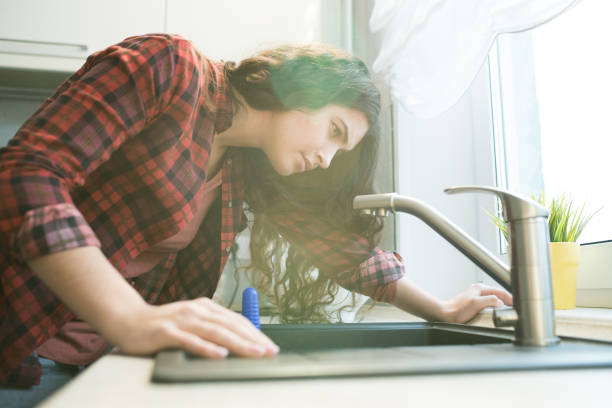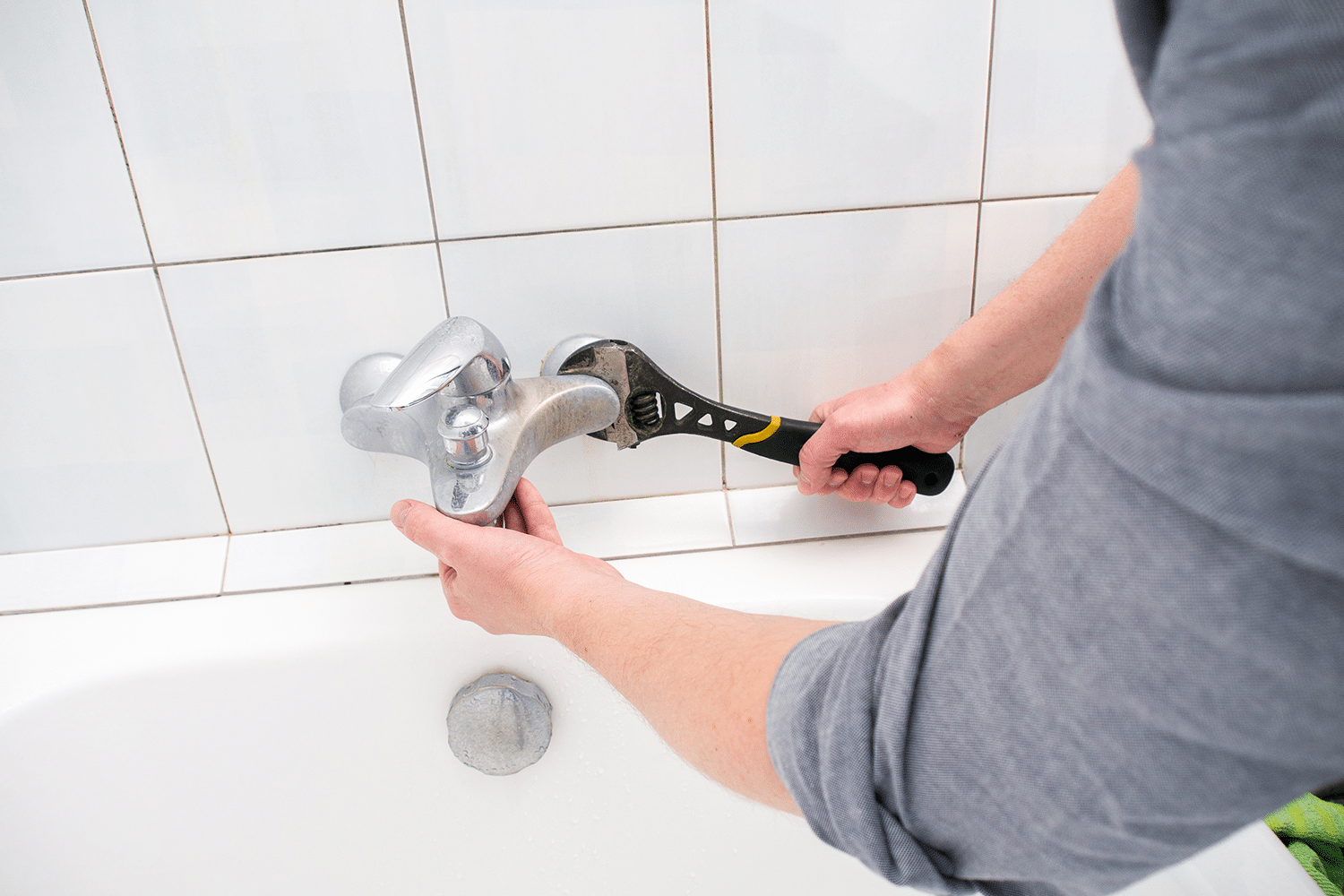Almost everyone has their own unique piece of advice when it comes to 4 Common Reasons for a Leaky Faucet.

Dripping taps may seem like a small aggravation, yet their impact surpasses just the inconvenience of the audio. From wasting water to incurring unnecessary monetary prices and health threats, neglecting a trickling faucet can result in numerous consequences. In this article, we'll look into why it's important to address this typical home concern immediately and efficiently.
Wastefulness of Water
Environmental Influence
Leaking taps add considerably to water wastefulness. According to the Epa (EPA), a single faucet trickling at one drip per second can lose more than 3,000 gallons of water per year. This not only pressures water sources however also influences environments and wild animals based on them.
Step-by-Step Guide to Taking Care Of a Dripping Tap
Devices Needed
Before attempting to take care of a trickling tap, collect the necessary devices, including a flexible wrench, screwdrivers, substitute parts (such as washers or cartridges), and plumber's tape.
Usual Faucet Issues and Their Solutions
Identify the sort of tap and the particular concern triggering the drip. Usual problems include damaged washing machines, corroded valve seats, or damaged O-rings. Refer to maker guidelines or online tutorials for step-by-step support on fixings.
Financial Costs
Enhanced Water Expenses
Past the ecological impact, dripping faucets can pump up water expenses significantly. The gathered wastefulness with time translates into greater energy expenses, which could have been avoided with prompt fixings.
Possible Residential Or Commercial Property Damage
Moreover, long term trickling can lead to harm to fixtures and surface areas surrounding the faucet. Water build-up can cause staining, deterioration, and even architectural problems if left neglected, leading to added repair service prices.
Wellness Problems
Mold and Mold Growth
The continuous visibility of moisture from a leaking faucet develops an excellent setting for mold and mildew growth. These fungis not just endanger interior air top quality yet additionally pose wellness dangers, specifically for individuals with respiratory problems or allergies.
Waterborne Diseases
Stagnant water in dripping taps can end up being a breeding place for microorganisms and other pathogens, enhancing the threat of waterborne illness. Impurities such as Legionella bacteria prosper in stagnant water, potentially leading to severe illnesses when ingested or breathed in.
Do it yourself vs. Professional Repair work
Benefits and drawbacks of DIY Repair Work
While some may try to fix a leaking faucet themselves, DIY fixings come with their own set of difficulties. Without correct knowledge and devices, do it yourself efforts can intensify the concern or lead to incomplete repairs, extending the problem.
Benefits of Employing an Expert Plumber
Employing a specialist plumber ensures that the underlying reason for the trickling tap is dealt with efficiently. Plumbing technicians have the expertise and tools to diagnose and repair tap problems efficiently, conserving time and reducing the danger of further damages.
Environmental Obligation
Specific Payment to Conservation
Taking responsibility for dealing with dripping faucets lines up with more comprehensive efforts toward water preservation and environmental sustainability. Every person's actions collectively make a considerable influence on protecting valuable resources.
Sustainable Living Practices
By prioritizing punctual repair work and embracing water-saving behaviors, people add to lasting living techniques that benefit both present and future generations.
Preventive Measures
Normal Maintenance Tips
To stop leaking taps, execute regular upkeep such as cleaning aerators, examining for leaks, and replacing worn-out parts promptly. Additionally, consider mounting water-saving tools or updating to a lot more effective fixtures.
Relevance of Prompt Services
Attending to trickling taps as soon as they're noticed stops additional water wastage and prospective damage, ultimately conserving both water and cash over time.
Effect On Property Worth
Understanding of Well-Maintained Home
Maintaining a residential or commercial property in good condition, consisting of addressing upkeep problems like leaking faucets, boosts its viewed value and worth among potential buyers or lessees.
Impact on Resale Value
Characteristics with properly maintained plumbing components, including faucets, command higher resale worths in the realty market. Resolving dripping faucets can add to a favorable impression during home inspections and arrangements.
Verdict
Dealing with a leaking faucet exceeds plain benefit; it's a crucial action toward saving water, decreasing financial costs, and protecting health and home. Whether with do it yourself repair services or professional support, doing something about it to take care of dripping faucets is a tiny yet impactful means to advertise accountable stewardship of resources and add to a healthier, much more lasting future.
How to Fix a Dripping or Leaky Faucet
A leaking faucet is one of the most common problems that homeowners encounter, but it being commonplace doesn’t make it any less annoying. The constant drip drip drip of a leaking bathtub faucet, showerhead, or sink tap can disturb your home’s serenity. Left neglected, a dripping faucet can also result in higher water bills and discoloration or mold growth in your sink or plumbing fixtures.
Fortunately, you don’t have to be a trained plumber to know how to stop a dripping faucet. With some basic tools, replacement parts, and a little patience, leaky faucet repair is a breeze. In this article, we’ll explain what causes dripping faucets and how you can fix them.
What Causes a Leaking Faucet?
Kitchen and bathroom faucets come in all manner of designs, but most involve some combination of valves, O-rings, seals, and washers. The O-ring is usually the weakest link, but any one of these pieces can wear down over time. Heat, moisture, temperature fluctuations, minerals, mold, and movement can contribute to warping and corrosion, breaking the watertight seal. This just comes with the territory of being a homeowner. Everything is always subject to wear and tear, and some component parts of your appliances and fixtures need to be replaced on occasion. At least replacement O-rings are cheap!
More rarely, dripping faucets can be a symptom of excessively high water pressure. Were this the case in your home, you would probably notice that the leak is not isolated to one faucet. Water pressure issues are harder to resolve on your own. We recommend contacting a professional plumber if you suspect your water pressure is too high.
How to Fix a Dripping Faucet
Pipe wrench or monkey wrench Allen wrench set Screwdrivers Old towel or rag Shut off the water.
Before you do anything, you need to turn off the water to keep from drenching your kitchen or bathroom. You should find a valve under the sink and against the wall. Once you’ve turned this valve, try turning the faucet on to confirm that the water source has been cut off.
If you can’t locate your local valve for the faucet you’re working on, you can always shut off the water to the house at the main valve. Of course, this will prohibit anyone from using the sinks, showers, or toilets while you’re working on the faucet that’s giving you trouble.
Plug or block the drain.
You’ll be disassembling the faucet and removing some small bits of hardware. Plug the drain with a stopper or rag to avoid the possibility of a small screw falling into your P-trap.
Take apart the faucet assembly.
There are several varieties of kitchen and bathroom faucets, each with its own manner of assembly. For detailed instructions on how to disassemble your faucet, you can refer to the fixture’s manual or contact the manufacturer. If you know whether you have a ball, disc, cartridge, or compression faucet, you can find detailed schematics online.
In general, you need to begin by removing the faucet handles. You might notice a small screw that you’ll need to remove with a screwdriver or Allen wrench. If you don’t see any visible securing hardware, it’s likely hidden under a decorative cap that can be unscrewed or popped off with flathead screwdriver.
Remove each piece methodically, consulting a schematic when necessary. Take notes or arrange the pieces in such a way to make it easier to correctly reassemble the faucet later.
Remove the cartridge.
Once you’ve removed the handles and securing hardware, you should be able to remove the valve cartridge or stem. Some cartridges will slide right out. Other faucet models will require you to loosen a nut with a pipe wrench before you can remove the valve stem.
Examine the exposed hardware.
With the cartridge or stem removed, inspect the component parts. Check the rubber O-rings for wear and tear. Also examine the seat washer for corrosion or other damage. These pieces are usually the responsible parties for a dripping faucet, but it’s worth inspecting the other component parts while you have the faucet disassembled.
Find replacement parts.
Once you’ve identified which faucet component has failed, find an identical replacement. Your local hardware store should have O-rings, seat washers, and other standard components in stock. If you have a luxury or uncommon faucet, you may have to contact the manufacturer for a replacement part.
It’s a good idea to take your old parts with you to the hardware store so you can compare them with the store’s inventory and be sure you’re purchasing the correct replacement.
Reassemble the faucet.
With your new parts in hand, reconstruct the faucet and handles. Don’t be tempted to overtighten screws or nuts. You might think this could create a better seal, but it can instead damage or bend a delicate part of the assembly and create a new problem for you.
Turn on the water and test the faucet.
The only thing left to do is test your work. Unplug the sink, turn the water back on, and try the faucet. Congratulate yourself on a job well done!
https://www.libertyhomeguard.com/how-to-fix-a-dripping-or-leaky-faucet/

I was brought to that editorial on Should I Repair or Replace a Leaky Faucet? from a good friend on a different web address. For those who enjoyed reading our blog post kindly make sure you remember to share it. I cherish your readership.